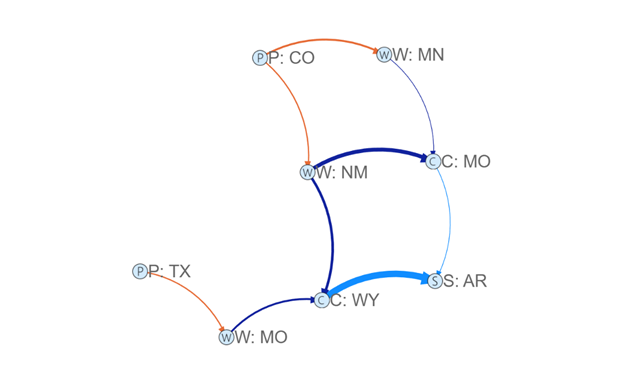Model your Supply Chain in a Graph Database | Part 4

In the fourth installment of this series, you'll learn how to model your supply chain using a graph database. Utilizing a graph database for your supply chain modeling can provide numerous advantages, including improved visibility, enhanced decision-making capabilities, and better collaboration between different teams and partners.
This post delves into the practical application of graph database modeling, providing examples of real-world scenarios where it can be a game-changer. From managing multiple vendors and tracking inventory to analyzing supplier performance and monitoring deliveries, the possibilities are endless.
If you're looking to optimize your supply chain, this series offers invaluable insights into how graph databases can streamline your processes, reduce costs, and improve efficiency. So tune in and discover how you can leverage this cutting-edge technology to take your supply chain management to the next level.
The post Model your Supply Chain in a Graph Database | Part 4 originally appeared on Azure SQL Devs’ Corner.
Published on:
Learn moreRelated posts
Top Strategies for Database and Data Warehouse Design
In the fast-paced world of data management, designing an efficient and effective database and data warehouse is crucial. It involves structuri...
Chat with your data in Azure SQL Database
In this blog post, you will discover how to have a more intuitive and conversational experience with your data in Azure SQL Database. With the...
Vector Search with Azure SQL Database
In the realm of Azure AI Search, vector search is a highly innovative capability that has broken new ground in the world of data search and an...
Change Tracking in Azure SQL Database
For those looking to track changes in their Azure SQL Databases, there are two options available: Change Tracking and Change Data Capture. Thi...
Migrating On-Premises databases to Azure SQL Database: Everything you need you know
Are you considering migrating your on-premises databases to Azure SQL? If so, this article is a must-read, as it covers everything you need to...
Allow Azure Services and resources to access this server – How it works in Azure SQL Database?
When creating an Azure SQL Database, one of the initial options you'll come across is the "Allow Azure Services and resources to access this s...
Maximizing Azure SQL Database performance with a globally distributed Redis write-behind cache
For those looking to leverage Azure SQL Database for high-performance data storage, this post explores the potential of using a globally distr...
Announcing General Availability of Change Data Capture (CDC) on Azure SQL Database
Azure SQL Database users, rejoice! Change data capture (CDC) is now generally available on the platform, offering you insight into your user t...
Azure SQL Database Ledger
In this special episode, Pieter Vanhove joins Sarah and Michael to provide insights into the latest feature of Azure SQL Database Ledger. This...